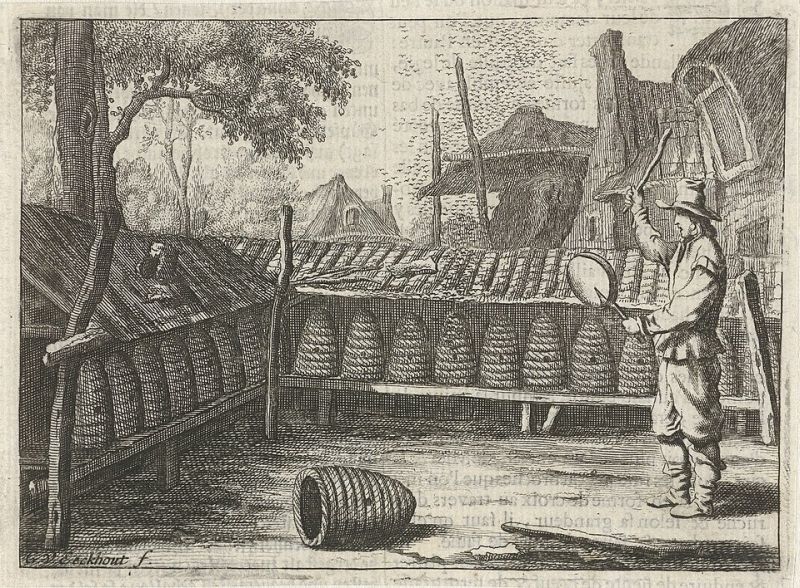
Image credits: Courtesy Wikimedia commons, public domain
Hi-res image: https://commons.wikimedia.org/wiki/File:Imker,_RP-P-1911-442.jpg
This print in Petrus Nyland, De Medicyn-Winckel, of Ervaren Huys-houder/ The Medicinal Shop, or Experienced House-Keeper, a comprehensive guide to household management with a wealth of practical advice including beekeeping, shows a beekeeper standing among his beehives: wooden boxes with straw skeps, familiar from the Netherlands.
The beekeeper is ready to inspect the bees by making noise while striking a pan with a stick, a method used to drive out or quiet the swarm. Such hives were commonly set in orderly rows, sometimes on low benches or within a simple enclosure to protect them from animals.
Beekeeping was a valued practice, carried over from age-old Netherlandish traditions where honey and beeswax were important commodities.
In New Amsterdam early settlers kept beehives in their urban gardens, such as the Kierstede family, for whom honey was a base ingredient for preparing remedies in their Apothecary. Honey was widely prescribed for its soothing, and healing properties, applied to wounds to prevent infection and mixed into syrups for sore throats, coughs, and stomach complaints.
Honey was also used in the kitchen as a natural sweetener and settlers used it in baking and brewing and preserving food. In addition to the honey, the beeswax was highly prized for making candles, and both products were essential to everyday life in a 17th-century household.
Reference:
Full title: Petrus Nyland, De Medicyn-Winckel, of ervaren huys-houder : zijnde het 3. deel van het Vermakelyck Landt-leven ... met ... den naerstigen byen-houder : noch is hier achter by-gevoeght den Verstandigen Kock, Amsterdam, 1668
[Petrus Nyland, The Medicinal Shop, or Experienced House-Keeper: Being the 3rd Part of the Pleasant Country Life ... with ... the Diligent Beekeeper: also appended here is The Sensible Cook, Amsterdam, 1668]

